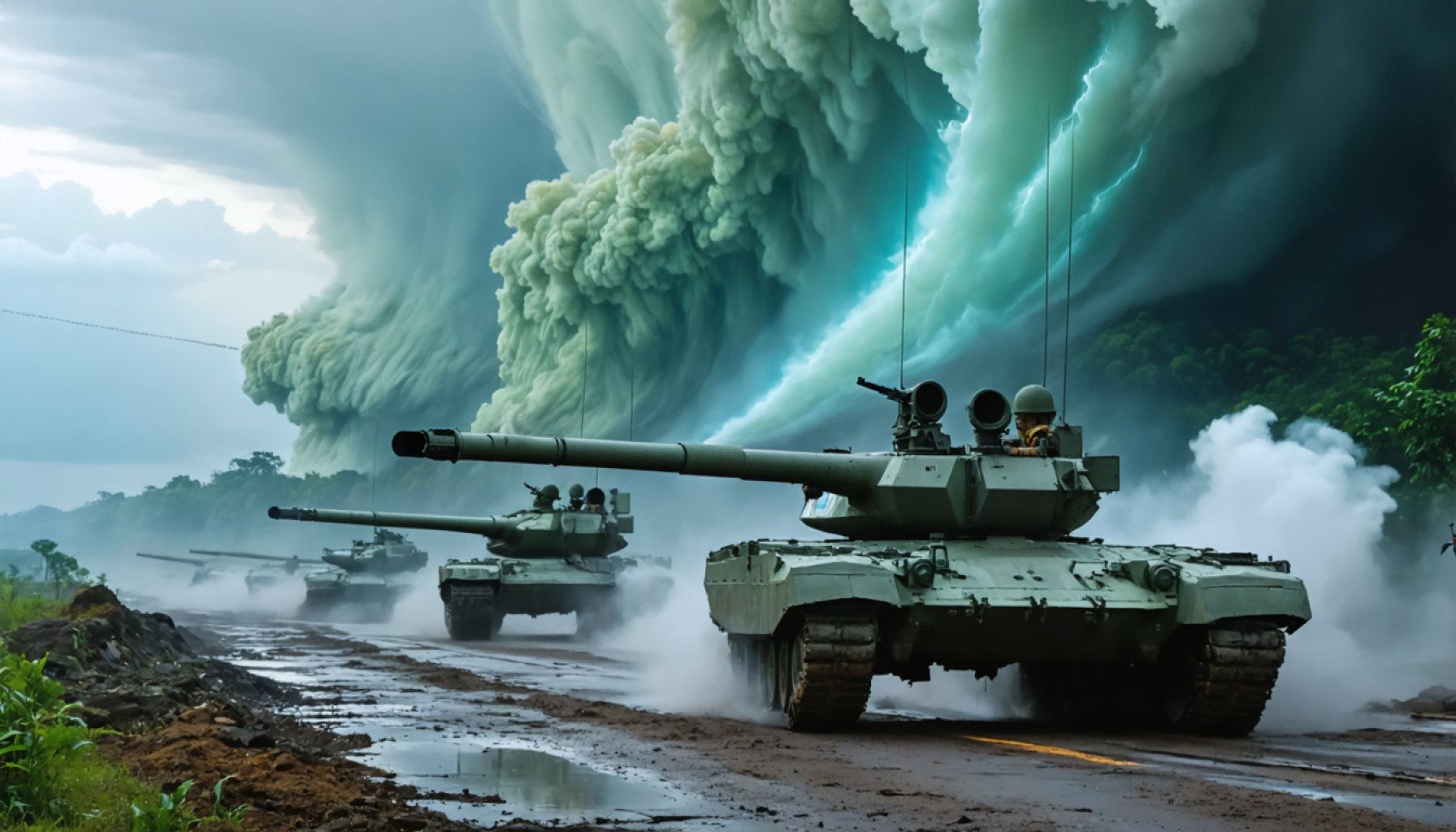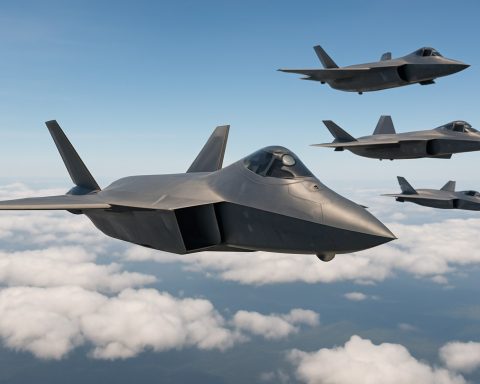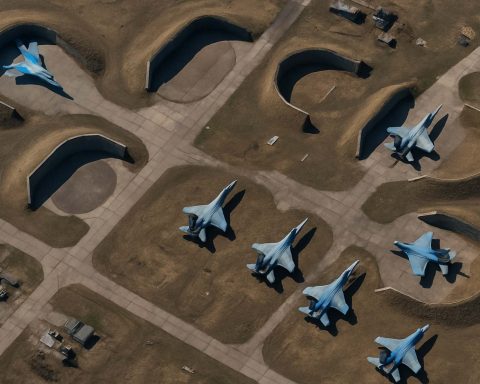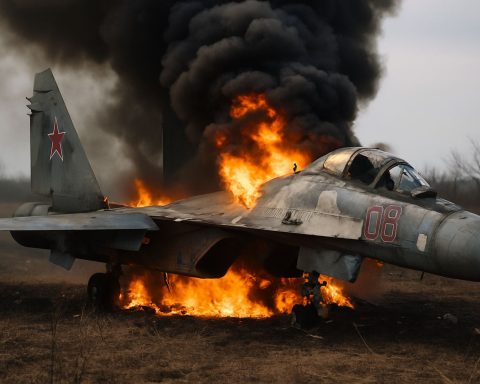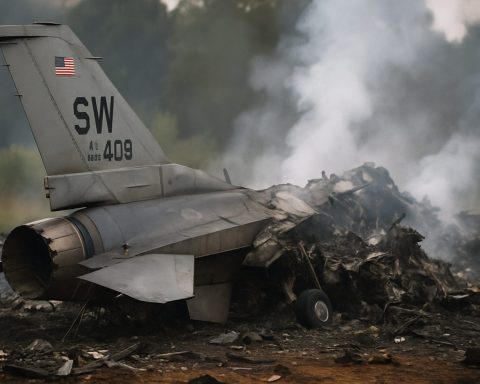- U.S. arms deals with Taiwan and the Philippines, including F-16 fighter jets, heighten tensions with China.
- These military transactions support Taiwan’s defensive efforts, underscoring its strategic alliances.
- China condemns these sales as violations of China-U.S. communiqués, viewing them as acts of containment.
- U.S. actions are rooted in longstanding treaties, such as the Taiwan Relations Act and the U.S.-Philippines Mutual Defense Treaty.
- The F-16 fleet strengthens the Philippines’ defense, addressing territorial tensions in the South China Sea.
- Arms deals are part of a complex geopolitical landscape, balancing deterrence and diplomatic engagement.
- These developments highlight the intricate interplay of military strategy and international diplomacy.
In the intricate web of geopolitics, few threads are as tautly wound as those connecting the United States, Taiwan, and the Philippines in the face of China’s resolute ambitions. As the morning sun stretches over the Pacific, the acts of diplomacy and military strategy continue their silent duel beneath the waves. Recently, the air has thickened with tension as the United States confirmed arms deals with Taiwan and the Philippines involving the formidable F-16 fighter jets, a move that has sparked vocal ire from Beijing.
Picture for a moment, the sleek silhouette of an F-16 cutting through the clouds over Taiwan’s air force base in Hualien during the island’s annual Han Kuang military drills—a scene that underscores Taipei’s determination to strengthen its defensive posture. The steel bird’s solo flight is a symbol, a message in motion, emphasizing that Taiwan is far from alone.
China, in its steadfast quest for reunification with Taiwan and the assertion of control over the resource-rich South China Sea, perceives these arms sales as an egregious affront. The thought of foreign fighter jets buzzing near its shores is as grating as nails on a blackboard to Beijing’s military strategists. A high-ranking Chinese official declares these sales a blatant violation of the deep-rooted China-U.S. joint communiqués. They view Washington’s actions as attempts to ‘contain and coerce,’ seeking to stall China’s regional aspirations.
Yet, clarity emerges when one examines the American perspective through the prism of international alliances and treaties. The Taiwan Relations Act of 1979 forms the backbone of U.S. defense support to Taipei, obligating Washington to provide defensive resources—an echo of commitment reverberating through decades. Meanwhile, the cold ink of the 1951 Mutual Defense Treaty between the U.S. and the Philippines is far from dry, binding the two nations in mutual security endeavors across the Pacific.
Beneath the surface of Chinese rhetoric lies an undeniable truth: the shadow of deterrence creating room for diplomatic engagement. Washington’s deliveries are calibrated measures designed to prevent conflict, maintaining a delicate equilibrium while providing its partners the means to defend sovereign skies and seas.
For the Philippines, these strategic advancements offer a safeguard against the swirling tides of tension in the South China Sea, a region fraught with territorial disputes and rich in untapped resources. The newly approved fleet of F-16s is not merely about aircraft; it’s about sovereignty, stability, and a country’s right to sail its own uncharted course.
As chess pieces continue to move on the Indo-Pacific board, what happens next remains fraught with potential. The reverberations of these decisions echo not just through the halls of power in Washington and Beijing, but in the very waters and winds that define this corner of the world. The takeaway is stark—global security is an intricate dance requiring constant vigilance, and in this oscillation between cooperation and confrontation, every move counts.
This evolving narrative is not just about arms sales; it’s about the future of international diplomacy and the pursuit of peace amidst rising waves.
How the U.S.-Taiwan-Philippines Arms Deals are Shaping the Future of International Diplomacy
Introduction
The geopolitical triangle formed by the United States, Taiwan, and the Philippines is becoming increasingly central in the ongoing power struggle with China. As the U.S. confirms arms deals involving F-16 fighter jets, it’s essential to understand the underlying dynamics, historical contexts, and broader implications of these moves.
Historical Context of U.S. Arms Sales
– Taiwan Relations Act of 1979: This significant legislative framework obliges the U.S. to provide Taiwan with defensive resources, reinforcing regional stability and deterring aggression from potential adversaries. This Act is fundamental to the understanding of U.S.-Taiwan collaborations.
– 1951 Mutual Defense Treaty with the Philippines: A pivotal agreement that ensures mutual security efforts between the U.S. and the Philippines, allowing for strategic military collaborations that aim at enhancing regional security amidst rising tensions in the South China Sea.
Key Features and Implications of the Arms Deals
– F-16 Fighter Jets: Known for their agility and versatility, these jets play a critical role in strengthening the air defense systems of Taiwan and the Philippines. They symbolize more than military might—they signify a shared effort to ensure regional peace.
– Deterrence Strategy: By strengthening the military capability of allied nations, the U.S. aims to deter potential conflicts. It’s a calculated measure to strike a balance, ensuring the sovereignty and freedom of navigation in contested regions.
Real-World Use Cases
– Taiwan’s Military Drills: The annual Han Kuang exercises in Taiwan illustrate the practical deployment of advanced military technology, showcasing preparedness against potential threats.
– Philippines’ Territorial Security: The South China Sea is a hotspot for disputes, and improved air defense strengthens the Philippines’ capacity to secure its maritime boundaries against encroachments.
Strategic and Diplomatic Insights
– China’s Perception: While China views these arms sales as provocations, they paradoxically create space for diplomatic dialogue by elevating the stakes of any potential military action.
– Alliance Solidification: These transactions reaffirm the U.S.’s commitment to its allies, reinforcing diplomatic bonds through tangible military support. They are critical components of a strategy aimed at ensuring peace through strength.
Pros and Cons Overview
Pros:
– Enhanced defense capabilities for Taiwan and the Philippines.
– Strengthened alliances in the Indo-Pacific.
– Potential deterrence against regional threats, promoting stability.
Cons:
– Heightened tensions with China, increasing the risk of diplomatic fallout.
– Proliferation of military assets could spark an arms race in the region.
Future Predictions
– Increased Diplomacy: Expect a rise in diplomatic talks as nations attempt to mitigate tensions.
– Technological Advancements: Continued development of military technology, making future arms deals more sophisticated.
– Strategic Realignment: Nations may reassess their alliances and strategies based on the oscillating power dynamics in the region.
Actionable Recommendations
– Stay Informed: Regularly explore updates on international relations and defense strategies through reputable sources like Wall Street Journal or The New York Times.
– Engage in Discussions: Participate in forums or educational webinars that focus on global security and diplomacy.
– Support Diplomatic Initiatives: Advocate for peacebuilding measures and support diplomatic engagements that aim to resolve regional conflicts.
In summary, while these arms deals are complex and multifaceted, they underscore the importance of vigilance and strategic partnerships in maintaining global peace and security. As this geopolitical dance continues, the role of informed citizens becomes even more crucial.
